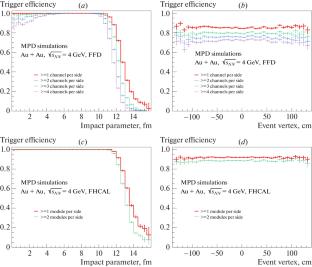MPD实验触发系统的性能
IF 0.4
4区 物理与天体物理
Q4 PHYSICS, NUCLEAR
引用次数: 0
摘要
多用途探测器(MPD)是俄罗斯JINR正在建设的NICA综合体的重离子实验。在对撞机模式下进行重离子碰撞,MPD将能够覆盖\(\sqrt{s_{NN}}=4{-}11\) GeV的能量范围,从而研究QCD相图中的重子富集区。MPD探测器的触发系统包括几个子系统,覆盖了前快速区和中快速区。在这篇文章中,我们回顾了系统在对撞机运行模式下的性能,并讨论了成功实施NICA物理程序所需的系统大小和碰撞能量扫描的含义。本文章由计算机程序翻译,如有差异,请以英文原文为准。

Performance of the Trigger System of the MPD Experiment
The Multi-Purpose Detector (MPD) is a heavy-ion experiment of the NICA complex under construction at JINR, Russia. With heavy-ion collisions in the collider mode, MPD will be able to cover the energy range \(\sqrt{s_{NN}}=4{-}11\) GeV and thus study the baryon-rich region of the QCD phase diagram. The trigger system of the MPD detector includes several subsystems covering the forward and central rapidity regions. In this contribution, we review the performance of the system for the collider mode of operation, and discuss the implications for the system size and the collision energy scans needed for successful implementation of the NICA physics program.
求助全文
通过发布文献求助,成功后即可免费获取论文全文。
去求助
来源期刊

Physics of Atomic Nuclei
物理-物理:核物理
CiteScore
0.60
自引率
25.00%
发文量
56
审稿时长
3-6 weeks
期刊介绍:
Physics of Atomic Nuclei is a journal that covers experimental and theoretical studies of nuclear physics: nuclear structure, spectra, and properties; radiation, fission, and nuclear reactions induced by photons, leptons, hadrons, and nuclei; fundamental interactions and symmetries; hadrons (with light, strange, charm, and bottom quarks); particle collisions at high and superhigh energies; gauge and unified quantum field theories, quark models, supersymmetry and supergravity, astrophysics and cosmology.
 求助内容:
求助内容: 应助结果提醒方式:
应助结果提醒方式:


